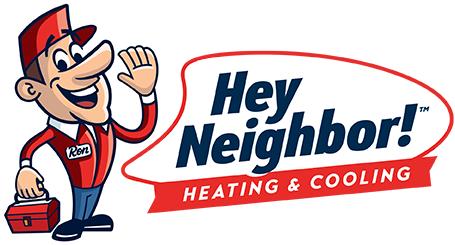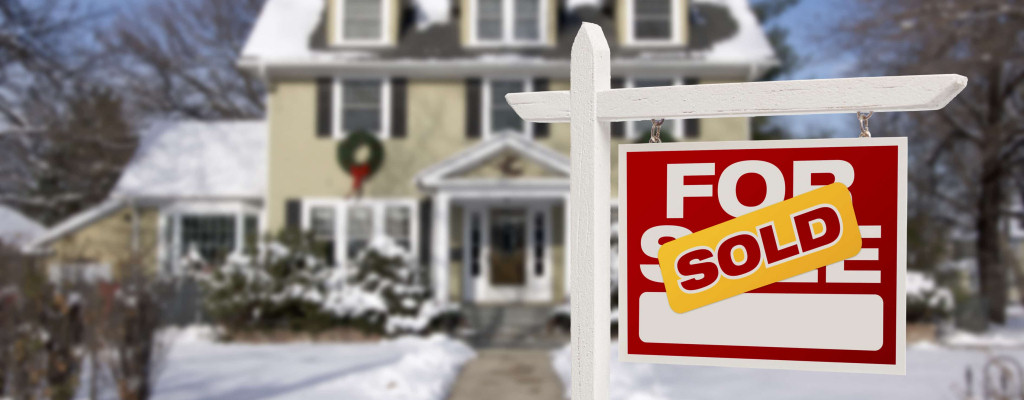Congrats on buying your first home! We bet you’re delighted with your investment, even though you may feel overwhelmed by all your new responsibilities. Now that you’re an owner, not a renter, it’s your job to take care of your home’s appliances and utilities, and that includes the heating and cooling equipment.
If the only interaction you’ve ever had with a furnace or air conditioner is using the thermostat, you probably have a lot to learn. We’ll help you get started by teaching you some HVAC system basics for new homeowners.
Know the various elements of an HVAC system
First, the acronym HVAC stands for heating, ventilation, and air conditioning. It generally refers to the system that keeps you warm during the winter and cool in the summer. In Northeast Ohio, the most common installation is a gas furnace and central air conditioner in a forced air system. Here are its key components:
The thermostat is the part that you interact with directly. This wall-mounted unit tells your system to perform a specific task, such as generating heat or turning the fan on.
Your furnace’s combustion chamber is also known as a burner, and it’s the part that heats the air. When your thermostat detects that the indoor temperature is below its set target, air from the furnace is ignited with incoming gas to produce heat.
The system’s heat exchanger is responsible for heat transference. It takes the warmth generated by burning gas and prepares it for distribution throughout your living space. The burned exhaust is vented through a flue outside to prevent poisoning.
Whether your thermostat is set to Heat or Cool, the blower motor is responsible for moving the heated or cooled air to your home. Electricity powers the motor, which spins a fan to circulate the air.
Your home’s ductwork is connected to the return and supply registers you see in each room and provides the path for your HVAC system to distribute comfort throughout your living space.
On the cooling end of your HVAC system, the evaporator coil absorbs heat from hot indoor air so it can be cooled by refrigerant and sent back into your home via air conditioning.
The condenser coil is similar to the evaporator but has a different job. Where the evaporator coil pulls hot air from inside, the condenser coil releases hot air outside. This allows the cycle of air circulation and filtration to continue.
Finally, indoor air quality equipment, such as an air filter or whole-house humidifier, keeps the air your family breathes nice and clean.
The importance of preventative maintenance
When you rented, your landlord handled the HVAC maintenance tasks, such as replacing the air filter. They also footed the bill for regular heating and cooling inspections and tune-ups. Now that you’re in charge, you can give preventive maintenance the full attention it deserves. First, complete these do-it-yourself HVAC maintenance tasks:
• We recommend replacing the system’s air filter every 30 to 90 days.
• Occasionally, lightly rinse the AC’s outside condenser unit with a garden hose and vegetation trimmed back to optimize airflow.
• Inside your home, keep all air registers open and free of obstructions to maintain proper system balance.
Along with the DIY tasks above, it’s essential to schedule regular maintenance for your HVAC system – once in the late summer or early fall for your furnace and once in the spring for your air conditioner. Only experienced professionals – like the Hey Neighbor Heating & Cooling team – can perform in-depth tasks like cleaning the furnace burners, recharging the AC refrigerant, and detecting air leaks in the ductwork. You’ll enjoy the following benefits when you hire our team to inspect and tune up your system each year:
• Fewer breakdowns
• More affordable repair bills
• Enhanced indoor comfort
• Lower monthly energy costs
• Extended system life span
• Improved indoor air quality
• Peace of mind
Be alert for signs of trouble
Now that you’re a homeowner, repairing and replacing your home’s HVAC system is your responsibility. We recommend being on the lookout for these clues that it’s time to contact the professionals:
Loud noises. Don’t ignore any rattling, squealing, clanking, or banging sounds. These could be cries for help from your home’s furnace or air conditioner.
Lack of comfort or poor air quality. Stuffy rooms, high or low humidity, inconsistent temperatures, and moldy smells are often symptoms of malfunctioning HVAC equipment.
Decreased energy efficiency. Are your bills unexpectedly or steadily increasing? This alarming trend could mean your heating and cooling system isn’t working well and needs professional attention.
Just plain old age. If your HVAC system looks old, it probably is. Like all mechanical equipment, furnaces and air conditioners eventually wear out. The typical lifespan of a furnace is around 15 years, while the working life of air conditioners and heat pumps is about a decade.
How the HVAC replacement process works
If your new home’s temperamental furnace or air conditioner can’t be fixed, it’ll need to be replaced with an HVAC contractor’s help. Here’s how this process works:
You’re always welcome to get as many opinions and estimates from available contractors in your area as you choose.
When you contact Hey Neighbor Heating & Cooling, one of our friendly Comfort Consultants will review what type of HVAC system and efficiency rating is ideal for your home and family.
You’ll receive a written estimate describing the work necessary, the equipment we’ll install, and the overall cost. We can also provide information about warranty coverage, service plans, and financing options.
It’s wise to schedule the installation as soon as you decide what system you want so it fits into your schedule as well as possible.
Our professional installation team will take care of everything, even hauling away your old equipment for safe disposal.
We’ll review the new system with you, explain how to use it, address any questions you may have, and provide all the necessary documentation.
We’re here for you!
If you have questions about these HVAC system fundamentals, you can rely on our neighborly team! We focus on customer education to help you make informed decisions about your new home’s heating and cooling system. Our company offers a wide range of services, so turn to us for everything from furnace maintenance to AC repair, heat pump installation, and much more. For more information or a no-cost, no-obligation estimate, please contact Hey Neighbor Heating & Cooling today!


Comments are closed